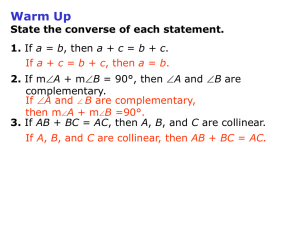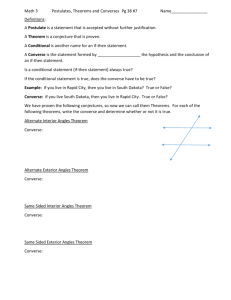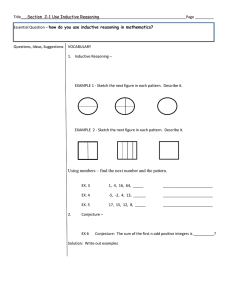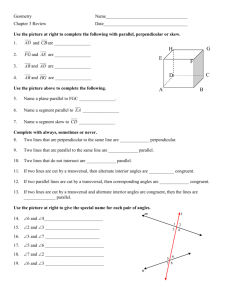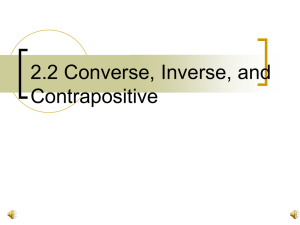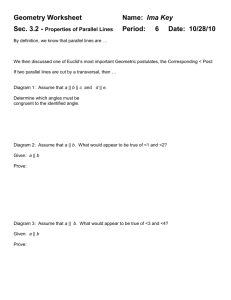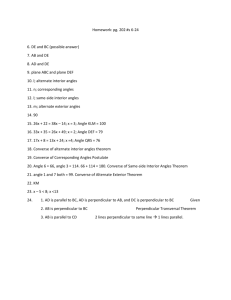3.3 Proving Lines Parallel Warm up intro: The converse of a theorem
advertisement
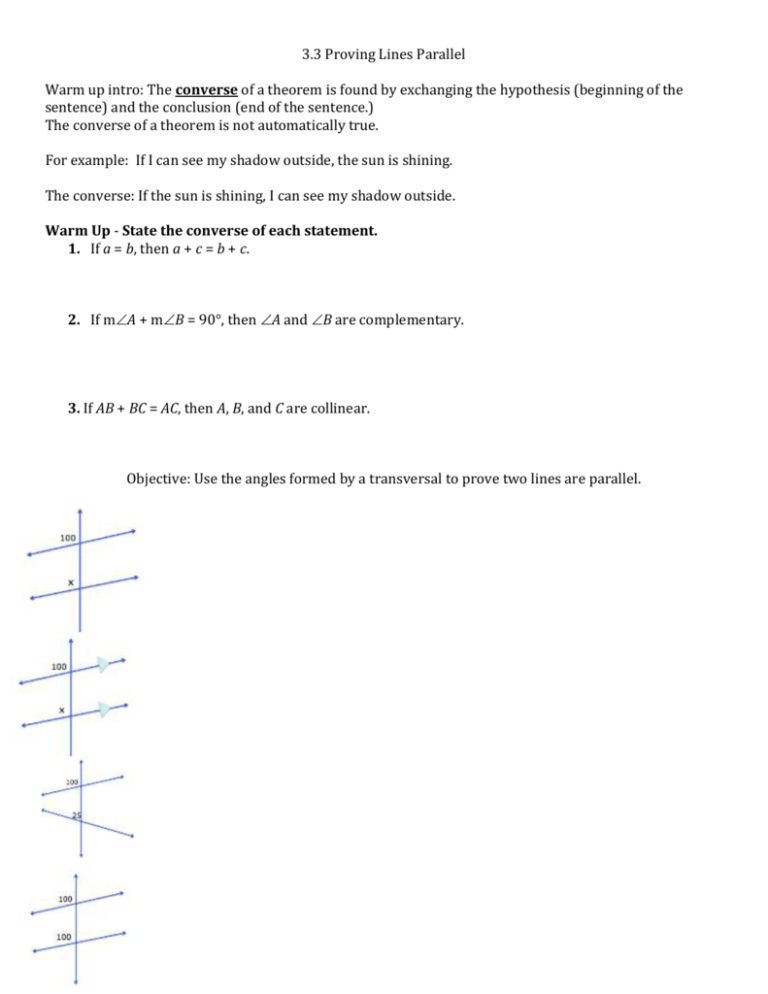
3.3 Proving Lines Parallel Warm up intro: The converse of a theorem is found by exchanging the hypothesis (beginning of the sentence) and the conclusion (end of the sentence.) The converse of a theorem is not automatically true. For example: If I can see my shadow outside, the sun is shining. The converse: If the sun is shining, I can see my shadow outside. Warm Up - State the converse of each statement. 1. If a = b, then a + c = b + c. 2. If mA + mB = 90°, then A and B are complementary. 3. If AB + BC = AC, then A, B, and C are collinear. Objective: Use the angles formed by a transversal to prove two lines are parallel. Make an “if…then” statement about each figure’s angles and lines. Example 1A: Using the Converse of the Corresponding Angles Postulate Use the Converse of the Corresponding Angles Postulate and the given information to show that ℓ || m. Use the Converse of the Corresponding Angles Postulate and the given information to show that ℓ || m. (aka plug in the value of x and see if it gives you a true statement.) m3 = (4x – 80)°, m7 = (3x – 50)°, x = 30 Use the Converse of the Corresponding Angles Postulate and the given information to show that ℓ || m. m7 = (4x + 26)°, m5 = (5x + 12)°, x = 13 Use the Converse of the Corresponding Angles Postulate and the given information to show that ℓ || m. m2 = (3x + 10)°, m3 = (5x + 10)°, x = 20 Example 2B: Determining Whether Lines are Parallel Use the given information and the theorems you have learned to show that r || s. m2 = (10x + 8)°, m3 = (25x – 67)°, x = 5 Use the given information and the theorems you have learned to show that r || s. m2 = (10x + 8)°, m3 = (25x – 67)°, x = 5 The Converse of the Corresponding Angles Postulate is used to construct parallel lines. The Parallel Postulate guarantees that for any line ℓ, you can always construct a parallel line through a point that is not on ℓ. Example 4: Carpentry Application A carpenter is creating a woodwork pattern and wants two long pieces to be parallel. m1= (8x + 20)° and m2 = (2x + 10)°. If x = 15, show that pieces A and B are parallel. What if…? Suppose the corresponding angles on the opposite side of the boat measure (4y – 2)° and (3y + 6)°, where y = 8. Show that the oars are parallel.

